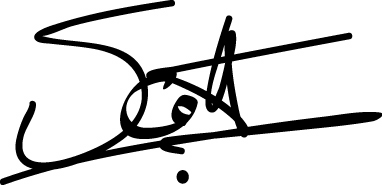Communication
Having a great product at the right price in the right store at the right time means nothing if nobody knows it’s there. Communicating the features, benefits, and price of the product and informing the target market where to find it often falls to advertising.
Advertising messages typically support the theme of the product / organization / idea that you are promoting. If done effectively, a promotional campaign will inform, persuade, and influence consumers’ buying decisions.
A Media Strategy is a plan of action that outlines the most effective way to utilize mass media to send a specific message. A good strategy will consider how best to generate a specific reaction from the audience without overspending. The written document that details the strategy is called a Media Proposal.
Creating an Advertising Campaign
The people in charge of executing the strategy are often referred to as the creative team. A typical creative team might consist of a copywriter and a graphic designer. These people may be under the supervision of an art director or project manager.
Depending on the nature of the creative team, either the Graphic or the Headline may be the beginning of an effective ad. The trick is coaxing each component of the ad to work together, without simply repeating each other. A headline that repeats the message presented by the image is boring. Don’t be boring.
Every single thing that appears in an ad is there for a reason (or should be), and even if we don’t actively interpret every one, they do have an impact. Be careful of diving into a project without doing the basic research. Bantering around clever phrases is relatively straightforward, but if you don’t connect with your audience, then your ad is doomed to failure.
Copy and Graphics work with Color and Layout to send a message that is intended to generate a reaction in the target audience. Very often that reaction will be based on an emotional response to the ad. Often, an emotional response is triggered by 2 things.
Tone
Determines how your message will approach the audience. Do you want to be friendly, funny, serious, warning, angry, etc?
Elements that determine tone include Syntax, Typography, Color and Composition.
Voice
Gives the message a personality (radio voice over) In print, voice works as function of overall tone. Elements that determine Voice include Syntax & Typography
Voice is the brand’s image as expressed in language
– George Felton Advertising Concept and Copy pg 110
Items that help to establish the overall tone and voice of the ad as well as deliver the actual message include
Imagery / Graphics
Style choices, such as Iconography, Color schemes, Copy & the lack thereof can be crucial in setting the tone expressed in an ad.
Typography
Decisions regarding which font to use at what size in relation to the other elements in the ad can give a distinctive voice to your message. Choosing the correct voice can mean the difference between the audience keying in on the message or rejecting it out of hand.
Copy
Copy is derived directly from our research. Inspiration may come from a given graphic, a unique selling point or feature of the product, or from the “lifestyle” associated with that product.
Headlines are attention getters & should reflect the main idea of the ad.
According to The Copywriter’s Handbook, by Robert Bly, the headline has four functions.
Get Attention
Appeal to self-interest or give some news
Select the audience
For example, an ad for a sports car may have the following headline:
If you have to ask how many miles per gallon, you can’t afford it.
Deliver a complete message
<
p style=”padding-left: 60px;”>“4 of 5 readers will not read your body copy “
(David Ogilvy as quoted by Robert Bly)
Draw the reader into the body copy
Arouse their curiosity
Some types of headlines that work:
Direct
“1/2 off!!” or “Now Showing”
Indirect
<
p style=”padding-left: 90px;”>“10 million to 1, we can mix it” (Headline for an industrial mixer)
It sounds like a bet, but speaks to the machine’s ability.
News
“The first transportable computer worth taking anywhere.” (Apple IIc)
How To
“How To Quit Smoking In 10 Days”
Question
“Do you Yahoo?”
Command
“Put a Tiger in your tank” (Exxon)
Body copy contains any information that reinforces the point made by the headline and/or graphic. In “clever” ads, the visual joke is often explained in the body copy. Technical data is sometimes contained here as well.
Boilerplate is “given” copy, such as disclaimers from the Legal Department, nutritional information, etc.
Depending on the objective, these elements will typically be combined by the creative team to do 3 things
